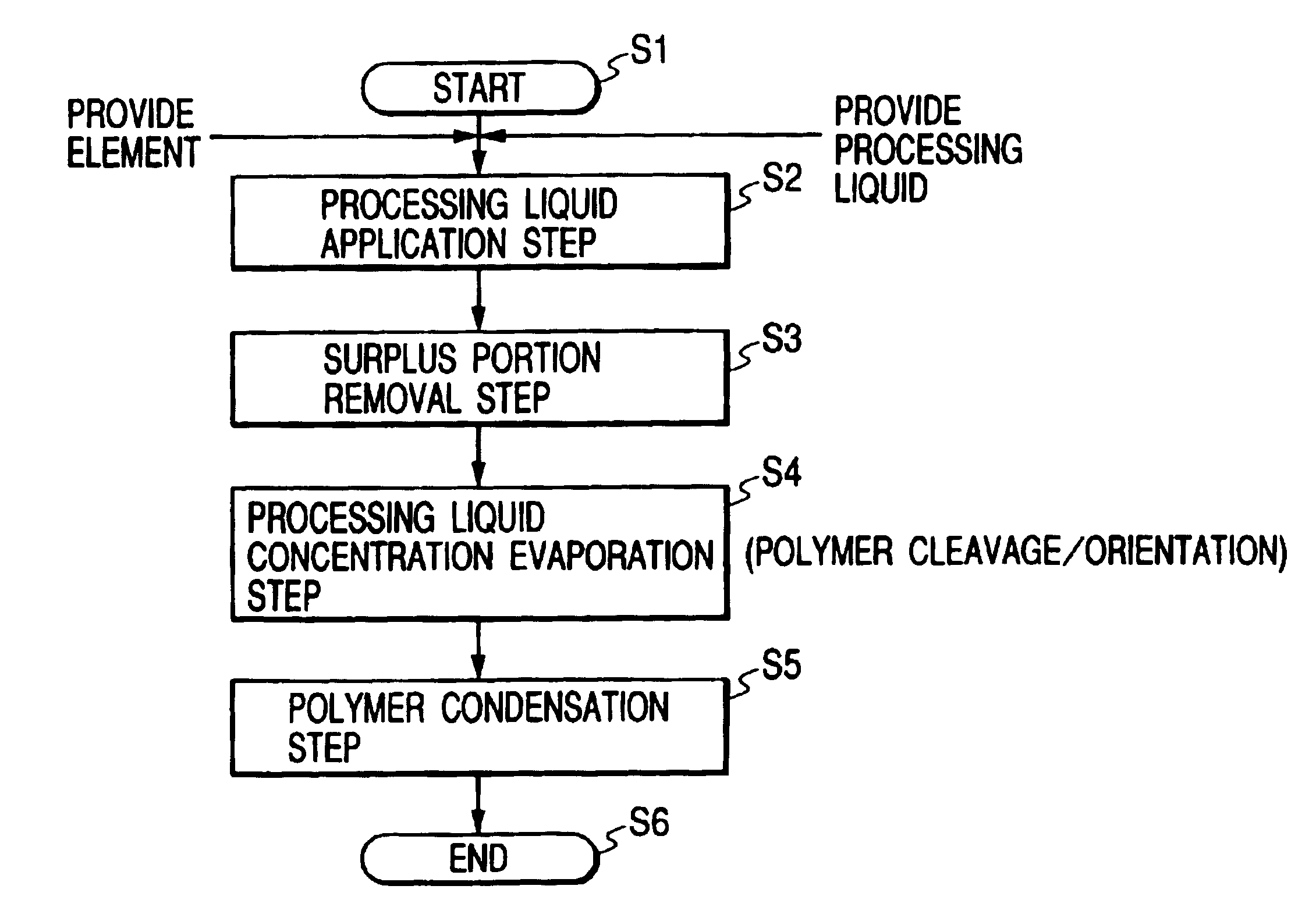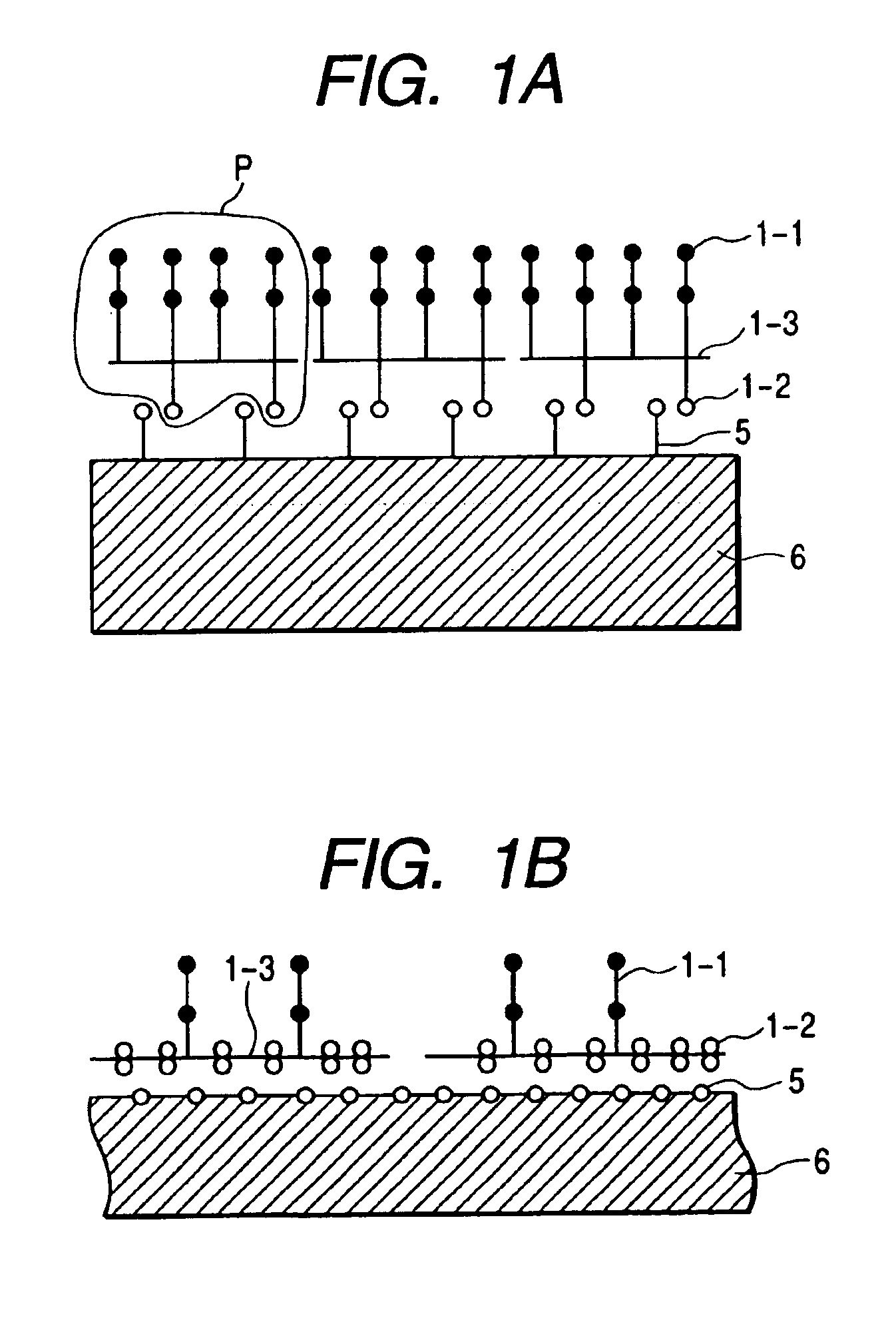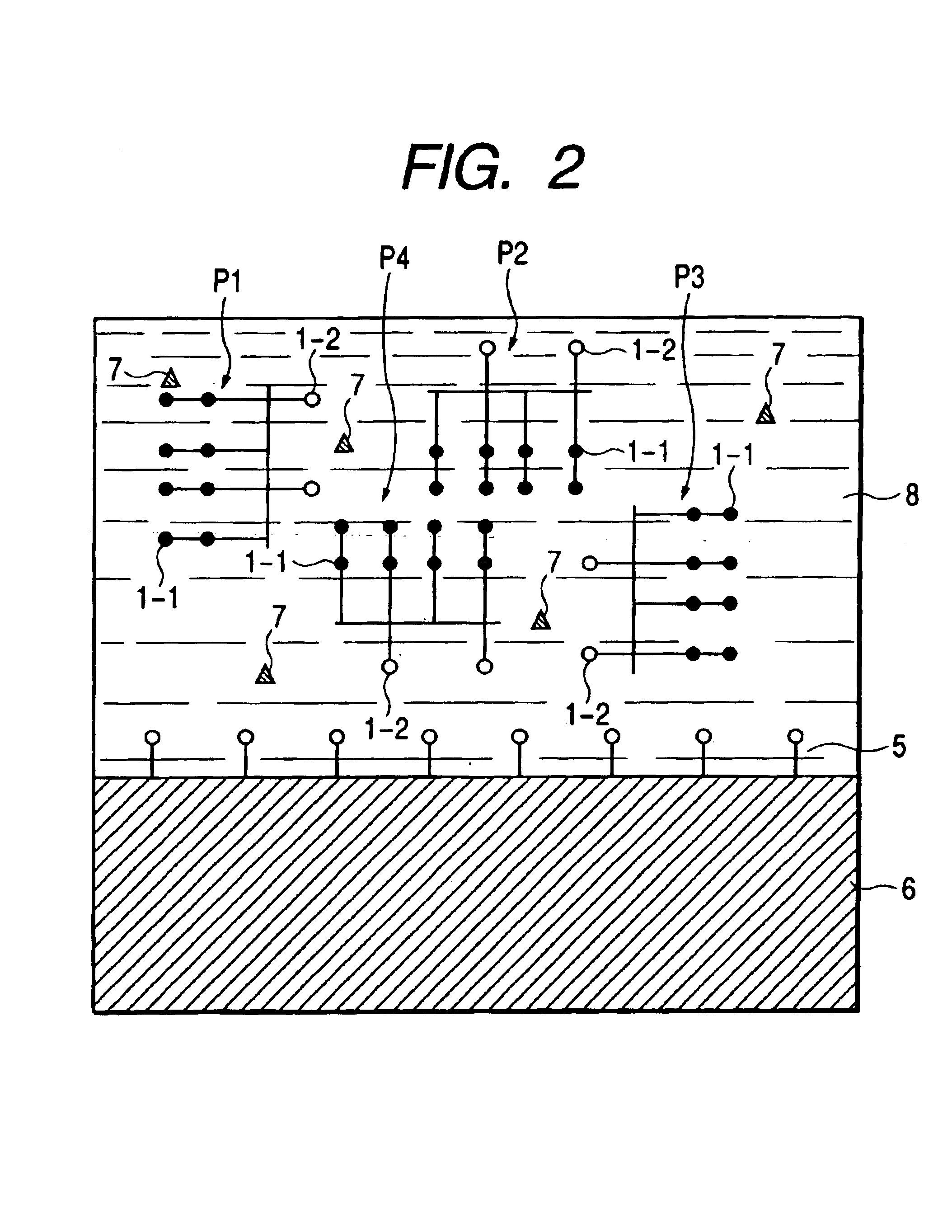Method of reforming element surface, element with reformed surface, method of manufacturing element with reformed surface, surface treatment liquid for forming reformed surface, and method of manufacturing surface treatment liquid
a technology of reformed elements and surface treatment liquids, applied in the direction of film/foil adhesives, synthetic resin layered products, natural mineral layered products, etc., can solve the problems of acid-deformed polypropylene chloride cannot be used, primer cannot be supplied evenly to a fine element or to the inner parts of a porous body, and the lack of continuity. , to achieve the effect of increasing the weight of the element, easy manufacturing of a surface-reformed elemen
- Summary
- Abstract
- Description
- Claims
- Application Information
AI Technical Summary
Benefits of technology
Problems solved by technology
Method used
Image
Examples
example 1
[0118]This example applied the present invention to modification of the internal hydrophobic wall surfaces of a polypropylene container 90 to make them hydrophilic, as illustrated in FIG. 9A.
[0119]The hydrophilic treatment solution having a composition given in Table 1 was prepared.
[0120]
TABLE 1(Hydrophilic treatment solution composition)ComponentsContents (wt. %)Polyoxyalkylene-poly(dimethyl siloxane)4.0Sulfuric acid0.5Isopropyl alcohol95.5
[0121]The solution was prepared using isopropyl alcohol as an organic solvent alcohol, which is a good solvent for dissolving polyoxyalkylene-poly(dimethyl siloxane). Isopropyl alcohol was first well mixed with sulfuric acid, which is used as an inorganic acid, added to 0.5 wt. % to increase the concentration in the final solution. Then, polyoxyalkylene-poly(dimethyl siloxane) was added to the above mixture to 4.0 wt. %, as polymer concentration in the final solution, and uniformly dissolved therein, to prepare the hydrophilic treatment solution....
example 2
[0137]Example 2 applied the surface modification method of the present invention to a fibrous element, more specifically to polypropylene / polyethylene (PP / PE) fibers, to conduct a hydrophilic surface treatment. The element of PP / PE fibers actually prepared was a block-shaped one in which the fibers were composited with each other to take a form useful for, e.g., an ink absorbing element, which could absorb liquid (e.g., ink) and hold the used liquid. For example, referring to FIG. 10A, a container 21 having an adequate shape and open to air by an opening 25 can be used as a liquid-holding container 20, when it is filled with fibrous bodies 23, capable of functioning as an absorbing element 24 to absorb and hold various types of liquid (e.g., ink), oriented in a given direction. Such an ink-absorbing element 24 can be suitably used for a discharged ink tank for ink jet recorders.
[0138]More specifically, the fibrous element 23, which constituted the absorbing element 24, was composed ...
example 3
[0162]This example applied the present invention to a hydrophilic treatment of plastic particle surfaces. More specifically, the polypropylene particle surfaces were treated in a manner similar to that in Example 1, which modified the water-repellent inner wall surfaces of the polypropylene container to be hydrophilic.
[0163]The hydrophilic treatment solution having a composition shown in Table 3 was prepared.
[0164]
TABLE 3Hydrophilic treatment solution compositionComponentsContents (wt. %)Polyoxyalkylene-poly(dimethyl siloxane)4.0Sulfuric acid0.5Isopropyl alcohol95.5
[0165]The solution was prepared by the method similar to that in Example 1. Isopropyl alcohol was first well mixed with sulfuric acid added to a concentration of 0.5 wt. % in the final solution. Then, polyoxyalkylene-poly(dimethyl siloxane) was added to the above mixture to a concentration of 4.0 wt. % in the final solution, and uniformly dissolved therein, to prepare the above hydrophilic treatment.
(1) Hydrophilic treatm...
PUM
| Property | Measurement | Unit |
|---|---|---|
| contact angle | aaaaa | aaaaa |
| contact angle | aaaaa | aaaaa |
| surface energy | aaaaa | aaaaa |
Abstract
Description
Claims
Application Information
 Login to View More
Login to View More - R&D
- Intellectual Property
- Life Sciences
- Materials
- Tech Scout
- Unparalleled Data Quality
- Higher Quality Content
- 60% Fewer Hallucinations
Browse by: Latest US Patents, China's latest patents, Technical Efficacy Thesaurus, Application Domain, Technology Topic, Popular Technical Reports.
© 2025 PatSnap. All rights reserved.Legal|Privacy policy|Modern Slavery Act Transparency Statement|Sitemap|About US| Contact US: help@patsnap.com



